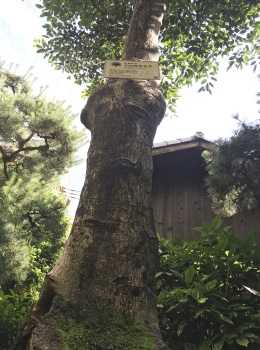本文
Rai Sanyo Historic Site Museum
| MOVIE FILES | ACCESS |
|---|
Rai Sanyo, his profile
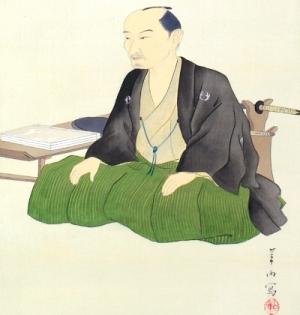
Rai Sanyo (1780-1832) was one of those litterateurs; he made his name as a historian, poet, calligrapher, artist, and so what in the late Edo period, when the samurai age was going to be put an end to in about fifty years. He is now well-known as the author of ‘Nihon-Gaishi’ (an unofficial history of Japan), which had a significant influence on those supporters of a noble cause in those days.
Sanyo, born in Osaka in 1780, moved with his parents to Hiroshima the next year, since his father Shunsui was appointed Confucian scholar for the school the Hiroshima Domain founded.
Sanyo got married at the age of twenty, but soon after, he seceded from the region without permission. Shortly he was arrested, taken back and confined into a small room in the residence for five years. During that period, he completed drafting his masterpiece ‘Nihon Gaishi’, which became a bestseller after his death. The house is now preserved as ‘Rai Sanyo’s room (Kyoshitsu), a national historic spot, on the museum premise.
Shoichi Watanabe, a leading modern Japanese critic, refers, in his book, to Rai Sanyo as the only historian comparable to David Hume (1711-1776), a British philosopher, economist, and historian, who in the 18th century, about fifty years before Rai was born, completed consolidated history of England on his own. Hume was among those great influential leaders in the world of thought in Europe.
Rai Sanyo turned out to be a spiritual leader during the late Edo period, the last samurai age. His historic writings are said to have inspired young samurais who had not been satisfied with their national polity. His writings showed to those youths what their nation should be like and what type of nation they should aspire for. In several decades after his death, they achieved the Meiji Restoration, which ended the age of samurais and restored imperial rule to Japan in 1868.
What is the museum all about?
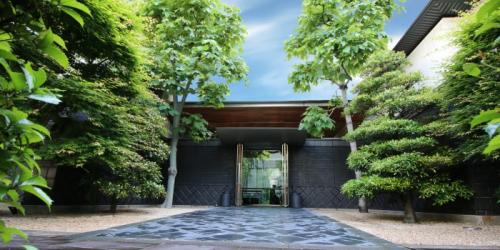
We exhibit many original materials that show how Sanyo lived his life, and his works of history, poems, paintings, calligraphies, and materrials concerning with his family history and so forth.
The museum is a small place like an oasis in the middle of downtown. You’ll find serene gardens surrounding the museum designed deliberately by a famous landscape gardener, in which you can find a tree that miraculously survived the A-bomb after being burnt down.
Facilities
1 The historic site 'Kyoshitsu' (the house Sanyo was confined in)
The old Sanyo museum and the historic site ‘Kyoshitsu’ (the house Sanyo was confined in) were destroyed by the atomic bomb, and reconstructed in 1958. The museum was again renewed in 1995.
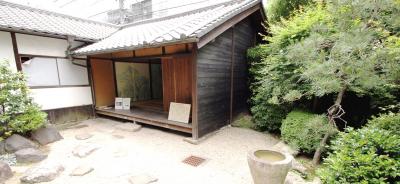
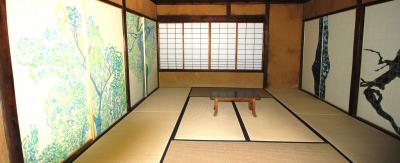
(The second picture shows the paintings on fusumas, Japanese sliding screen)
2The stone gatepost
The stone gatepost, 2 meters tall, made in 1927 was also broken into pieces by the bomb, and now has been restored to its original state.
3 Kurogane holly, the A-bomb survived tree
Kurogane holly, one of the 170 A-bomed trees in the city, is alive in the garden. It is said that the tree sprouted again in 1949, four years after it was bombed approximately 410 meters from the hypocenter.
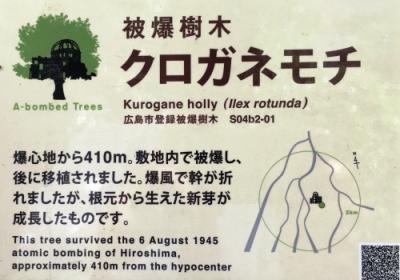
4 Bunjin-tei, the inner court
The inner court of the museum is a garden called Bunjin-tei, which reflects literary taste in those days, designed by Prof. K. Nakane, a leading garden designer in the twentieth century.
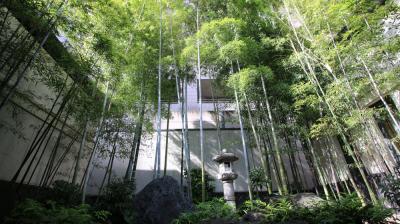
5 Tea room
We have a room designed to use exclusively for a tea ceremony. Throughout the year, many groups hold their ceremonies. Among them there is one that welcomes over one hundred guests. You don’t need to have a reservation to take part in it. It is held every month, except in January and August.
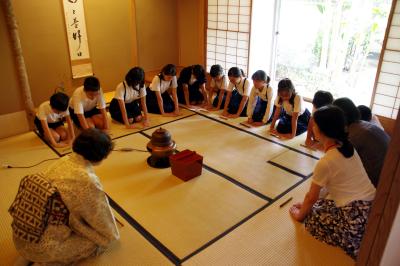
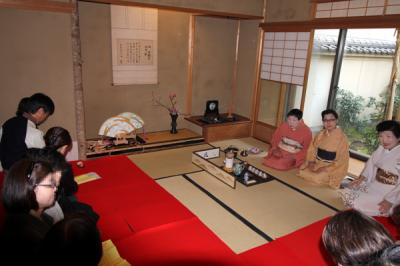
To cherish each encounter in the tea room as a once-in-a-lifetime one is the essential spirit in tea ceremonies.



